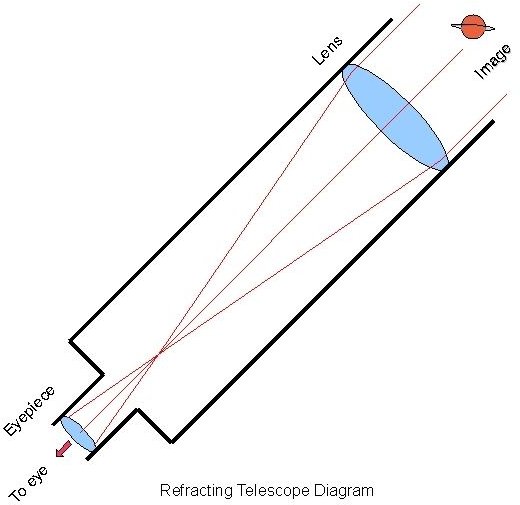...And that is when we start to invent.
It's the early 17th century. We finally realize that we have the power to manipulate light. Mirrors and lenses have the capability of reflecting and magnifying images, and we are able to use this capability to our advantage. We can make things appear to be much larger than they actually are with such simple tools. We can see further than we have ever imagined.
Enter: the telescope.
With this tool, we have learned more about our place in the universe than we have with any other piece of equipment.
Hans Lipperhey, a german spectacle maker, is often attributed with the invention of the telescope. However, the first person to point it to the night sky was Galileo Galilei. Galileo realized that the telescope could be used to study the stars, and improved the invention for astronomical purposes.
Galileo's telescope design is what we now refer to as a refracting telescope. This type of telescope uses lenses (typically made of glass) to bend light in a way that makes it appear larger than it actually is.
One famous refracting telescope is the 24" Clark Telescope housed at the historical Lowell Observatory.
This telescope was created by Alvin Clark in 1896. As Lowell Observatory's website says, "The Clark is one of the largest, most productive telescopes of its era and the first large telescope in the desert southwest of the United States." This telescope has a 24 inch aperture. This means that the opening hole at the top of the telescope has a 24 inch diameter. This is immense for a refracting telescope, considering that the entire 24 inch lens is made of glass.
The Clark Telescope has been used for some monumental discoveries and research in astronomical history. Percival Lowell, the founder of Lowell Observatory and a renowned astronomer, was the first to conduct research on this telescope. His detailed research on Mars through this telescope helped to popularize the planet, as well as astronomy as a whole. V.M. Slither used the Clark for his seminal galaxy research, in which he detected the radial velocities of galaxies (how fast they are moving away from us). This research eventually led to the idea that the Universe is expanding, as well as the Big Bang Theory. The Clark was also used for mapping the moon. The lunar data obtained by the Clark was used heavily in NASA's Apollo program.
Since then, the Clark has retired to a placid life of tours and leisurely nighttime viewings.
Needless to say, the Clark Telescope at the Lowell Observatory is an impressive instrument, as well as a salient piece of astronomical history. Without refracting telescopes like these, our knowledge of the cosmos and our place in it may not be what it is today.


.jpg)


No comments:
Post a Comment